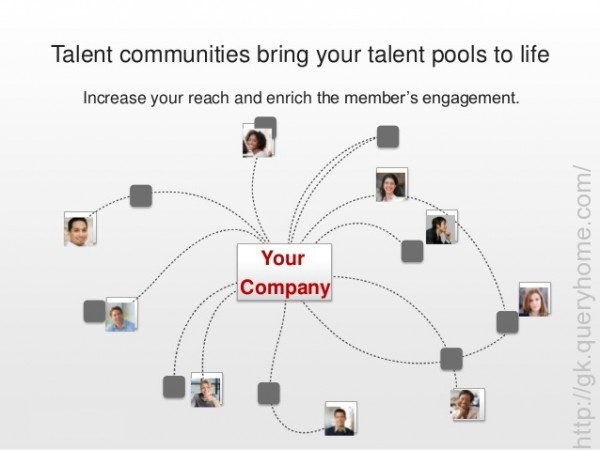Outlined below are the 11 benefits of community engagement online.

Internet Saturation

In 1998, home-based internet access was only 18%, by 2008 it was 84%, now in 2015 the rate remains steady at 89%.
The rate of internet saturation has quite naturally slowed in recent years. The most recent data, suggests that 89% of Australian homes now have internet access. If you want to engage the broader community in public policy conversations, you simply MUST be doing so online. If you aren’t, then you aren’t really trying. It’s that simple.
Time Poverty

40% of people of India visit QueryHome sites between 8am-6pm when they take a few minutes out of their working day.
Community engagement practitioners are increasingly using interception-style surveys to gather community opinion from people in the street, parks, playgrounds, shopping centres etc. The internet overcomes this problem by letting (very nearly) everybody have access at ANY TIME of their choosing. Be that during morning tea at work, after dinner while relaxing on the couch watching Game of Thrones, or on the bus or train commuting to and from work.
Engage Under-Represented Groups

The usually silent majority, busy people, the online community.
Most people won’t go to a public meeting. Those that do generally have a very good reason; meaning they tend to hold a strong view one way or another on a particular issue. More often than not, a small group of people have a very strong view and quite naturally attempt to drown out all other voices so that their view might prevail. The people who don’t have a strong view simply don’t get a chance to be heard. The internet provides a safe avenue for these people to express their views without the risk of the antagonism they might feel in a public forum.
Make Better Decisions

Wise decision-making is the result of good quality data and better quality dialogue.
There are two fundamental reasons to undertake community engagement. The idealist believes it is the right thing to do. The pragmatist believes it leads to better decisions. Community and stakeholder engagement is good for risk management; good for testing project assumptions, scope and proposed solutions and good manners.
This rationale applies to both offline and online community engagement practice. The difference being that because online community engagement allows you to reach more people, it is more effective in managing risk, testing assumptions, and being a good neighbour.
Community Ownership

Over time, shared information and open dialogue build trust and community ownership over decisions.
Community ownership, or at the very least, appreciation of the rationale for a particular decision, is another long argued reason for good community involvement in decision-making processes. The deeper the involvement, it is argued, the more likely it is that your community will get the reasons for the decision, even if they don’t necessarily agree with it.
This argument holds true for online community engagement too, with two caveats. Community understanding is not the same as community ownership, so simply telling your community what you are up to online doesn’t cut it. Which leads us to the second caveat, the more engaging/collaborative, the online methodology is, the more deeply the community is involved in dialogue around the issues, the more likely it is that they will understand the underlying issues, tensions, and competing priorities that you are attempting to manage your way through. Which means that online polling and surveys will never be as effective as online discussion forums, Q&A and storytelling.
Build a Community Around You

Save time and money by talking directly with your keenest stakeholder.
As practitioners working in community engagement, we inevitably spend lots and lots of time working with people who are upset (often with good reason) about something. Typically, we would look at just how upset someone is and also look at how much influence that person has when we are making a decision about just exactly how much time to spend with them. People with lots of influence tend to get personal briefings and quite long meetings. People with less influence might get a phone call or even a newsletter People spent an entire spring afternoon in the backyard of one particularly knowledgeable, influential, and outraged, member of the community.
The thing is, we need to spend a lot more of our energy engaging all of those other people who are likely to engage positively with our projects. These people are the low hanging fruit for community engagement. They have demonstrated that they are interested in their community, interested in public policy, and willing to get involved in a conversation. Engaging online allows you to market your project directly to these people, saving you real time and money, and giving you instant access to a range of views.
Drive Cultural Change

Improve organisational transparency and responsiveness.
Something we hadn’t planned on when we started Bang the Table is that online community engagement could be used by senior management as a cultural change driver. And yet, again and again, this has proven to be the case. Very early on, the CEO of a council on Sydney’s fringe made it very clear during a meeting with his executive team that he expected each business stream to isolate 5% of their ordinary budgets for community engagement activities. Furthermore, he expected them to consult extensively and broadly on all council activities. You could see what he was proposing was a quiet revolution. Some bought into it, others did not. The later group did not stick around for very long.
Ring-Fence Your Territory

Manage the conversation before it manages you.
Anyone can set up a Facebook page in just a few minutes to attack you for a decision you have or have not made. This is the brutal reality. There is no hiding from the online community. There is far more organisational risk from ignoring this new reality than there is from moving into the online space. We have seen this reality repeatedly. If you get in first and provide an authorised and well-managed space for the community to discuss the issues you are considering, they will ignore any spaces that spring up later in response to agitation by an individual or small group within the community.
Debunk the Myths

More people, more opinions, a new truth.
Nature abhors a vacuum. So says the aphorism. In the absence of good quality authorised information, your community will simply make stuff up. They will assume the worst. They will quickly become agitated. And then they will attack you. It’s a fairly simple, linear process. When a small group, or even one well-resourced individual, has made it their business to “own” a subject and spread misinformation, it can be very difficult to put the conversation back on an even keel. Online community engagement allows you to get more people, with divergent views, to speak up. The rhetorical space had been dominated for many years by a small, but very vocal (and cranky), group of community members. By taking the issue online, the council saw there were alternate voices. These voices eventually overwhelmed the noisy minority that had prevented any action for many years.
Online community engagement allows you to get more people, with divergent views, to speak up. Early in the life of Bang the Table, we observed a community conversation about an old quarry. The rhetorical space had been dominated for many years by a small, but very vocal (and cranky), group of community members. By taking the issue online, the council saw there were alternate voices. These voices eventually overwhelmed the noisy minority that had prevented any action for many years.
Unearth the Real Issues

What matters to us, often doesn’t matter to our community.
One of my favourite stories from my time in government is about riparian corridors. I worked in reasonably close proximity to a group of very nice policy advisers who spent a great deal of time and energy thinking about how to protect the strip of land immediately adjacent to rivers and streams. This land is important for a whole range of very good environmental reasons. Though the thing that got me was they couldn’t understand why members of the Aboriginal community (or anyone else really) didn’t share their passion for the issue. They just couldn’t get anyone to show up to their meetings. The fact that these communities had more pressing matters to address like, unemployment, community safety, housing, justice, and chronic health issues, didn’t seem to occur to anyone. The point of this story is not to denigrate the fine work of the riparian corridors team, it is to point out that when we work on something day and night, sometimes for many years, we can forget about its place in the universe. It is important to open the conversation up and let the light in.
The point of this story is not to denigrate the fine work of the riparian corridors team, it is to point out that when we work on something day and night, sometimes for many years, we can forget about its place in the universe. It is important to open the conversation up and let the light in.
Value

Engage more people, more effectively, for less money.
This is a universal truth. Face-to-face community engagement is resource expensive. Online engagement is far from free if you want to do it well, but it is far more scalable than traditional methods. This doesn’t mean you should stop doing face-to-face engagement, it means you should use a mixed methodology to get the best results.


